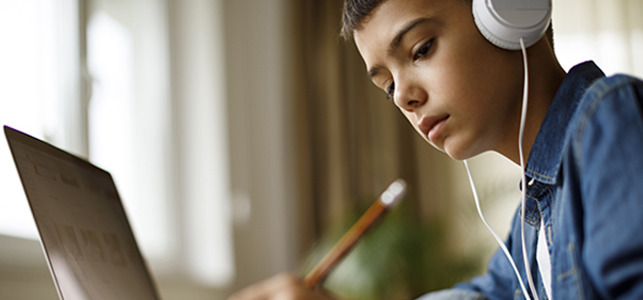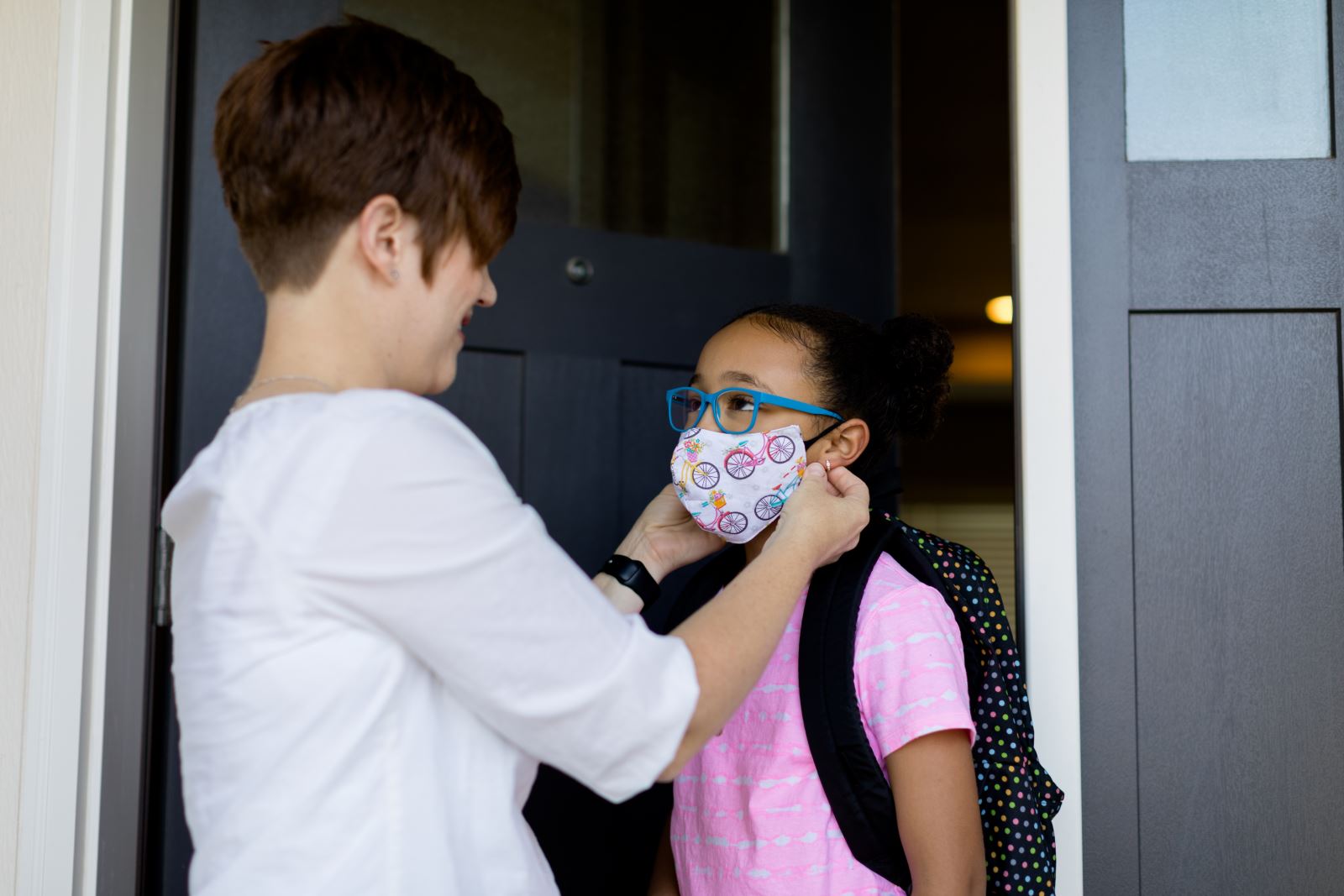
COVID-19: A pediatrician, and dad, discusses the tough decisions families are facing around returning to school
 Should kids go back to school in-person? It’s one of the most challenging questions parents and school systems have faced in recent weeks. While many schools have opted for a fully virtual approach, others have offered families a choice between virtual and in-person learning. In either case, most families have a plan for the start of the school year – but the question will likely arise again during the school year.
Should kids go back to school in-person? It’s one of the most challenging questions parents and school systems have faced in recent weeks. While many schools have opted for a fully virtual approach, others have offered families a choice between virtual and in-person learning. In either case, most families have a plan for the start of the school year – but the question will likely arise again during the school year.
Dr. Romesh Wijesooriya, pediatrician and dad of school-aged children, addresses some tough questions that parents and school systems alike need to think about. And, as he reiterates, there is no perfect, one size fits all solution. You know your child and family best and we support you.
What are the benefits of school?
I think there are two main things that school does for our children and for our society. One is that it teaches our children specific technical skills, which is how we classically think about education – things like how to read, write, do math, analyze, etc. Using a sports analogy, this is along the lines of learning how to dribble, shoot and pass in soccer or basketball.
Then, there’s the application of those skills on a team and with other people. School provides that part of learning and socialization as well. When we learn technical skills, we then have to be able to apply them in the context of other human beings.
What we do in school is learn not just how to think or write by ourselves, but how to communicate, compromise, work with others, work under the direction of others and care for one another as we’re doing our work.
How does this integrate with your health care practice as a pediatrician? Are you assessing both of these things at well visits?
When we’re looking at how a child is developing, we look not only at the specific things they can do (developmental milestones like can they walk, when did they walk, how well are they walking, etc.) but also at how they’re engaging and interacting with the people around them. You can do the technical skills really well, but if you’re not learning how to incorporate that in your interactions with other human beings, there’s something missing. My job as a pediatrician is to help parents connect all of these dots and provide support services that can help kids thrive now, and into adulthood.
Is there anything we can look at to help guide us through this moment, or is this just a very unique situation?
I certainly think looking at other models that are being used or have been used around homeschooling or distance learning can really help us learn how to do this as best we can in our own homes and in our society.
What we do know is that the effectiveness of distance or individualized learning at home is dependent on the age and abilities of a child. There’s not a one size fits all answer. The younger they are, the more difficult it is. The older they get, the more the technical skills can probably be learned in a virtual way. The social parts, we’re are struggling with together in this COVID reality – children, adolescents and adults.
What about the other aspects of caring for kids that schools provide, such as meals and health supports?
This is a really important point. For anyone who has been following the school conversation, I think you’re aware of how important it is for us to think about the most vulnerable in our population and how the school question is affecting them in some pretty unique and difficult ways.
In our society, and in most societies, the school is the epicenter of how we provide services to kids with special needs – medical, social and/or educational. Therapy services, IEPs, counseling services, etc. often utilize schools as the way we provide those services to families and children. In this current world, that’s more complicated.
For children with social challenges, the socialization and structure of school is especially important. So, this is affecting those children and families in a disproportionate way and I’m seeing that with my patients. We’re here to support families however we can through this transition. If they need an extra check-in because of concerns with milestones or questions around mental health – we’re here. And not just our pediatricians, our full team of occupational, physical and speech therapists; psychologists, psychiatrists and Cameron K. Gallagher Mental Health Resource Center; and all of our specialists are on high-alert and ready to help as needed. AND, we’re providing care both in-person and virtually to meet the comfort level of our kids and parents.
There are also children who are experiencing socioeconomic disadvantages. Many school systems in our area continued to provide meal services this summer – and we are seeing that continue in many areas. In fact, some of our team members are volunteering to support this need.
There has been a lot of discussion about whether kids can get or transmit COVID. What is your current thinking about this?
There is certainly more and more data coming out. I do think the most recent data suggesting that perhaps children can transmit more than we might initially have thought has changed the equation a bit. However, we know pretty clearly from both the U.S. and worldwide data that although kids can get COVID, it’s very rare for them to get severe illness. In Virginia, we’ve had about 130 hospitalizations for children under the age of 19 and zero deaths in the state for this age group.
This doesn’t mean that we shouldn’t take it seriously. We also have to consider the risks to our teachers and other adults in the school environments, as well as immunocompromised students and the loved ones of all the students and team members. We should be thinking about which staff members, children and family members are most at-risk and coming up with alternate plans for them.
How can we help make sure that schools are as prepared as they should be? What kind of questions should people be asking?
I think the main thing is people being really diligent about masks, hand hygiene and spacing. We have some good data from countries that have re-opened schools around the world and the countries that have followed diligent precautionary measures have not seen a spike in COVID transmission rates. On the other hand, the countries that have opened schools and let children and staff decide whether or not to wear masks, etc. have seen more spikes. It’s really important to make sure that our school districts are being diligent about the basics.
At what age do you think kids should try to start wearing masks?
Certainly over the age of 4 and I think you can probably make a case for toddlers doing it if everyone else is. Kids will follow whatever they see around them and, in fact, 1.5-2-year-olds are excellent at this. Think about potty training in daycare centers. The reason it works so well is because they’re around each other and they want to do what the other kids are doing. CHoR also has some great online mask resources for kids with special needs, and to help make mask wearing fun.
Do you have a couple takeaways that you think are really important on this topic?
One is that we all need to continue to be diligent about masks, hand hygiene and spacing. We absolutely need to continue doing these basic things.
Second is that there will not be one perfect answer as we’re making decisions about back to school. There are costs to going back and costs to not going back, so we need to weigh those individually and as a society.
